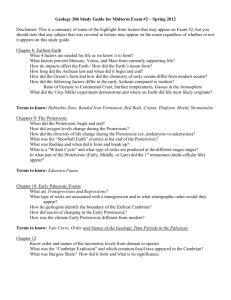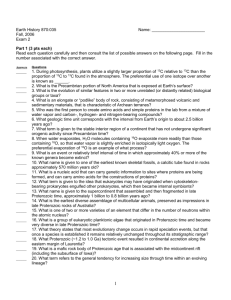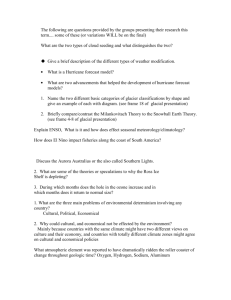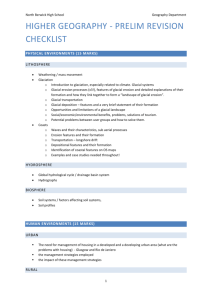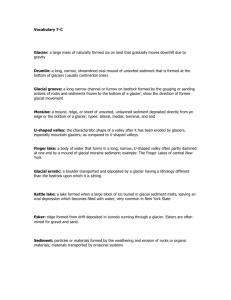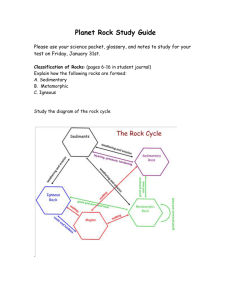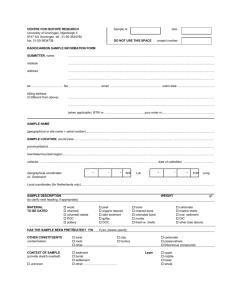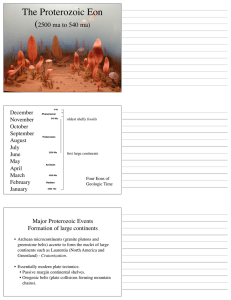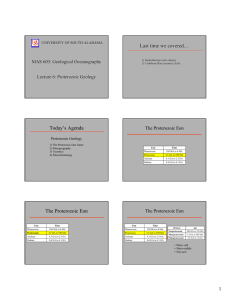2013年1月12日托福写作真题回忆
advertisement
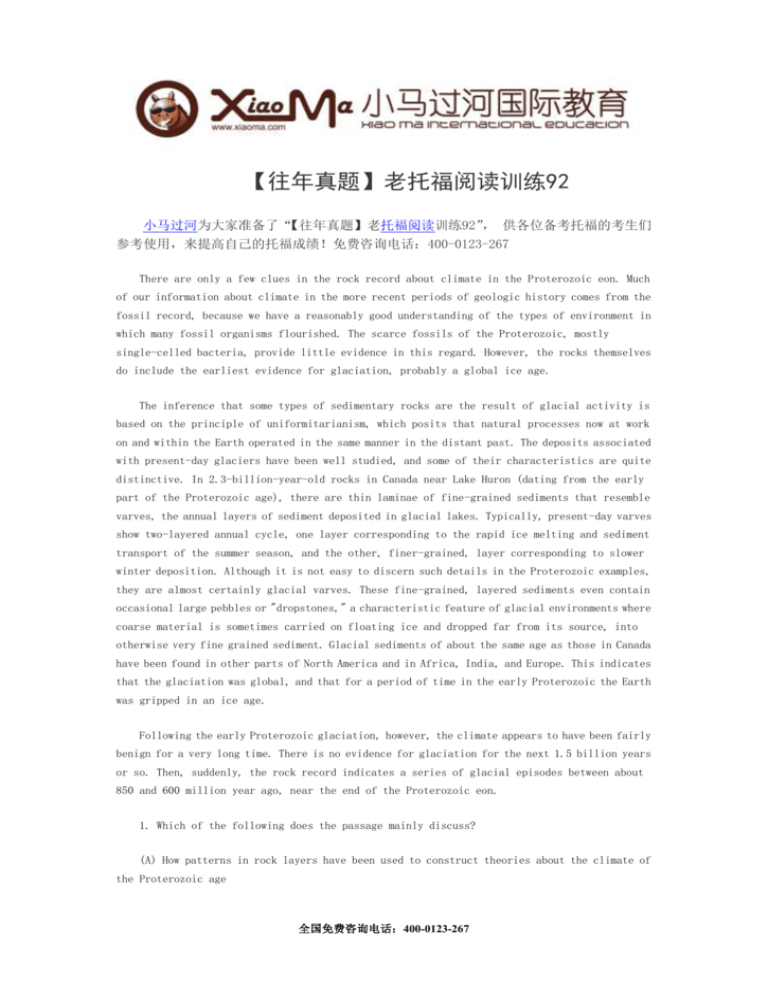
【往年真题】老托福阅读训练92 小马过河为大家准备了“【往年真题】老托福阅读训练92” , 供各位备考托福的考生们 参考使用,来提高自己的托福成绩!免费咨询电话:400-0123-267 There are only a few clues in the rock record about climate in the Proterozoic eon. Much of our information about climate in the more recent periods of geologic history comes from the fossil record, because we have a reasonably good understanding of the types of environment in which many fossil organisms flourished. The scarce fossils of the Proterozoic, mostly single-celled bacteria, provide little evidence in this regard. However, the rocks themselves do include the earliest evidence for glaciation, probably a global ice age. The inference that some types of sedimentary rocks are the result of glacial activity is based on the principle of uniformitarianism, which posits that natural processes now at work on and within the Earth operated in the same manner in the distant past. The deposits associated with present-day glaciers have been well studied, and some of their characteristics are quite distinctive. In 2.3-billion-year-old rocks in Canada near Lake Huron (dating from the early part of the Proterozoic age), there are thin laminae of fine-grained sediments that resemble varves, the annual layers of sediment deposited in glacial lakes. Typically, present-day varves show two-layered annual cycle, one layer corresponding to the rapid ice melting and sediment transport of the summer season, and the other, finer-grained, layer corresponding to slower winter deposition. Although it is not easy to discern such details in the Proterozoic examples, they are almost certainly glacial varves. These fine-grained, layered sediments even contain occasional large pebbles or "dropstones," a characteristic feature of glacial environments where coarse material is sometimes carried on floating ice and dropped far from its source, into otherwise very fine grained sediment. Glacial sediments of about the same age as those in Canada have been found in other parts of North America and in Africa, India, and Europe. This indicates that the glaciation was global, and that for a period of time in the early Proterozoic the Earth was gripped in an ice age. Following the early Proterozoic glaciation, however, the climate appears to have been fairly benign for a very long time. There is no evidence for glaciation for the next 1.5 billion years or so. Then, suddenly, the rock record indicates a series of glacial episodes between about 850 and 600 million year ago, near the end of the Proterozoic eon. 1. Which of the following does the passage mainly discuss? (A) How patterns in rock layers have been used to construct theories about the climate of the Proterozoic age 全国免费咨询电话:400-0123-267 (B) What some rare fossils indicate about glacial conditions during the late Proterozoic age (C) The varying characteristics of Proterozoic glacial varves in different parts of the world (D) The number of glacial episodes that the Earth has experienced since the Proterozoic age 2. According to the passage , the fossil record of the Proterozoic eon is (A) highly regarded because it preserves the remains of many kinds of organisms (B) less informative than the fossil record of more recent periods (C) very difficult to interpret due to damage from bacteria (D) more useful to researchers than otheraspects of the rock record 3. The word "scarce" in line 4 is closest in meaning to (A) ancient (B) tiny (C) available (D) rare 4. It can be inferred from the passage that the principle of uniformitarianism indicates that (A) similar conditions produce similar rock formations (B) rock layers in a given region remain undisturbed over time (C) different kinds of sedimentary rocks may have similar origins (D) each continent has its own distinctive pattern of sediment layers 5. The word "resemble" in line 14 is closest in meaning to 全国免费咨询电话:400-0123-267 (A) result from (B) penetrate (C) look like (D) replace have similar origins 6. According to the passage , the layers in varves are primarily formed by (A) fossilized bacteria (B) pieces of ancient dropstones (C) a combination of ancient and recent sediments (D) annual cycles of sediment transport and deposition 7. The phrase "the other" in line 17 refers to another (A) annual cycle (B) glacial lake (C) layer of sediment (D) season 8. According to the passage , the presence of dropstones indicates that (A) the glacial environment has been unusually servere (B) the fine-grained sediment has built up very slowly (C) there has been a global ice age (D) coarse rock material has been carried great distances 9. Why does the author mention Canada, North America, Africa, India, and Europe in lines 23-24? (A) To demonstrate the global spread of dropstones 全国免费咨询电话:400-0123-267 (B) To explain the principles of varve formation (C) To provide evidence for the theory that there was a global ice age in the early Proterozoic eon (D) To illustrate the varied climatic changes of the Proterozoic eon in different parts of the globe 10. Which of the following terms is defined in the passage ? (A) fossil record (line 3) (B) laminae (line 13) (C) varves (line14) (D) glacial episodes (line 28) 来源于:小马过河 相关推荐: 托福阅读常出现的9个深度句 托福阅读利剑之语法 托福阅读解题方法之《主旨题》 全国免费咨询电话:400-0123-267
